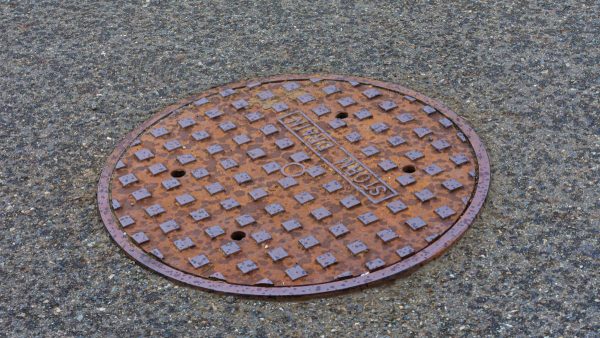Preventing water infiltration

Water infiltration through failing pipe and manhole joints poses a significant challenge for municipal wastewater systems. When groundwater improperly enters collection systems, treatment plants face efficiency declines and escalating costs. Addressing this problem requires understanding the causes, assessing the scale of damage, and implementing cost-effective solutions. An experienced consulting team navigates these challenges and protects your infrastructure investment.
Understanding groundwater infiltration
Groundwater infiltration occurs when water from the ground improperly enters a sanitary sewer system. Usually, this water either drains deep into the soil or flows into stormwater systems. However, when it infiltrates sewer pipes through cracks, leaky joints, or poorly maintained manholes, the consequences can be severe:
- Increased treatment costs: Treating this unintended water depletes your budget.
- Reduced system capacity: Precious capacity is consumed by groundwater, straining the system during peak times.
The most common entry points include:
- Cracks in pipes and manholes.
- Leaky or failing pipe joints.
- Poorly maintained connections and penetrations.
Signs of groundwater infiltration
Identifying groundwater infiltration early can save resources and prevent long-term damage. Look for these signs:
- Backups during rainy seasons: Overflowing manholes or spillage onto roads indicate infiltration.
- Continuous pump activity: Pumps running excessively after rain suggest groundwater is overloading the system.
- Flow rate spikes: Abnormally high inflow readings during wet conditions point to infiltration issues.
Effective solutions for joint sealing
Joint sealing is a vital measure to combat groundwater infiltration. Here are industry-leading methods and materials:
Crack and Joint Injection with Polyurethane Foam
Water-activated polyurethane resins, such as Spetec PUR HighFoamer and Spetec PUR GT380, are injected under pressure to seal cracks and voids. These resins react with water to form durable, watertight seals.
- Efficiency: A three-person crew can seal two manholes per day on average.
- Material usage: A 4-foot diameter, 8-foot tall manhole requires 2.5–5 gallons of resin.
Point grouting for failing sewer pipe joints
Point grouting addresses hydrostatic pressure on joints by injecting resin to seal leaks and fill surrounding soil voids. Benefits include:
- Reduction of hydrostatic pressure.
- Improved soil load-bearing capacity, preventing future misalignments.
Long-term manhole invert repairs
Replacing hydraulic cement with flexible polyurethane grouts, like Spetec PUR GT380 or Spetec PUR F400, ensures durable sealing. These materials adapt to structural movement, minimizing repeat repairs.
Precast manhole joint sealing
Hydrophilic polyurethane, such as Spetec PUR GT380, is ideal for precast joints. Its low viscosity allows for deep penetration, creating a long-lasting seal.
